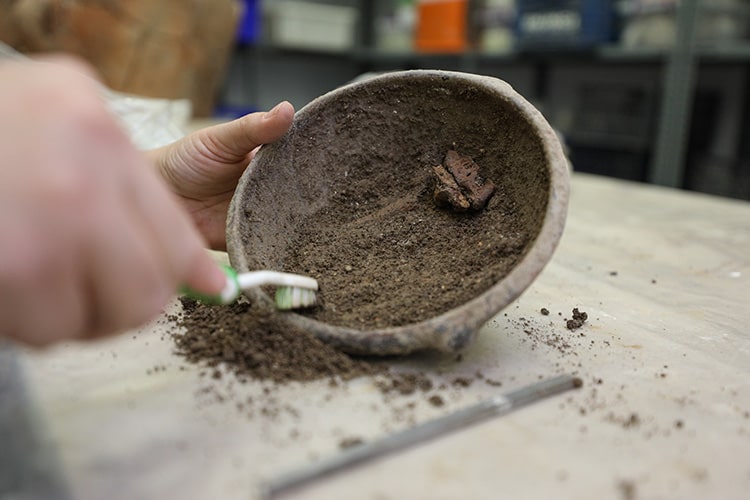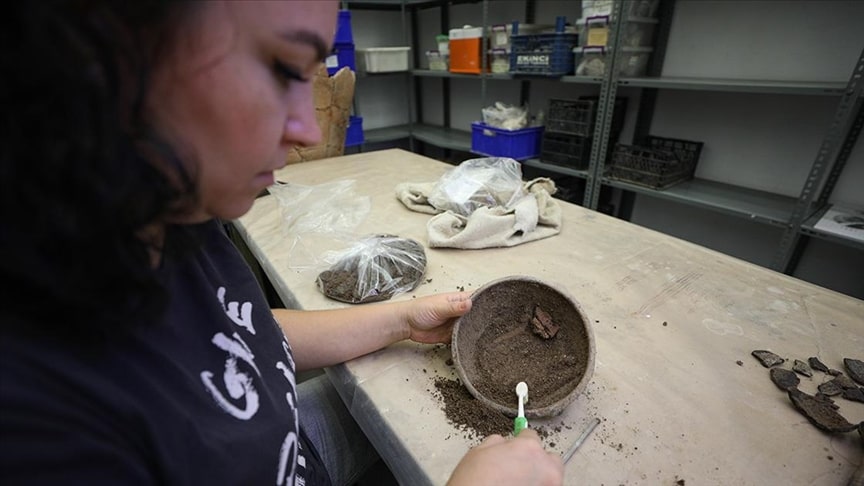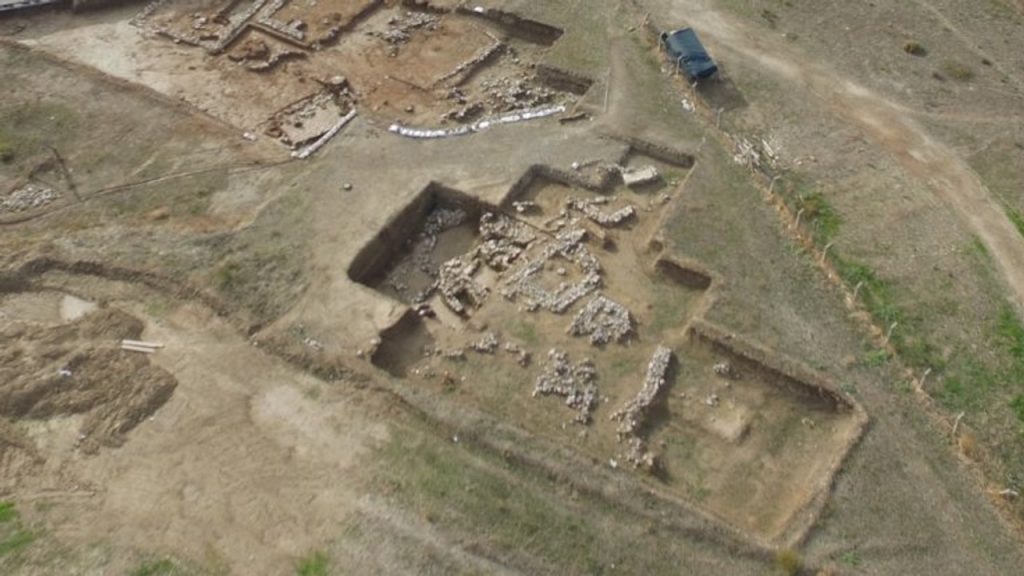
What was the reason for leaving the food on the plate and running away 5,000 years ago?
There are archaeological findings that, when you hold them, make you feel the fear, panic, and horror that people experienced during natural disasters or enemy attacks.
Those moments flash before your eyes like a film reel.
Or you may come across an artifact that leaves you wondering why it was left in that way, shrouded in mystery.
In the Yassıtepe excavations, a 5,000-year-old bowl containing food remnants is considered a find with enduring mystery.
“We estimate that it likely held a meal made from a small livestock animal, such as a lamb or goat, which they left uneaten, possibly due to a catastrophe. We can find the remains of bones within this bowl. As various clues suggest, they had a kitchen that included both animal and plant-based foods, but we can see that they particularly enjoyed and consumed animal products, such as meat from small and large livestock,” says Dr. Zafer Derin, the Director of the Yeşilova mound Excavations.

Dr. Zafer Derin notes that the bowl remained well-preserved because it was found in a protected underground area, and he speculates, “People can abandon their location during a disaster. Perhaps this was their last meal.”
Zafer Derin mentions that they aim to uncover new information about the foods and culinary culture from 5,000 years ago by studying these remains.
In the Yeşilova/Yassıtepe Höyük excavations, where information about human life from 8,500 years ago has been obtained, other archaeological finds include 8,000-year-old axes, a 5,000-year-old scent and ointment container, and bone-made needles.
Yeşilova Mound
Yeşilova Höyüğü is a mound located in Bornova, Izmir, and is the oldest known prehistoric human settlement in the Izmir region. It was continuously inhabited from approximately 6500 BC to 4000 BC and was later covered by alluvial deposits.

Prior to its discovery in 2003, Izmir was believed to have a history dating back up to 5,000 years. However, excavations conducted at Yeşilova Höyüğü revealed that it is one of the oldest settlements in Anatolia. Excavations at the site began in 2005 in collaboration with the Izmir Archaeology Museum and have been led by Assoc. Prof. Dr. Zafer Derin on behalf of the Ministry of Culture and Tourism and Ege University since 2008.
You may also like
- A 1700-year-old statue of Pan unearthed during the excavations at Polyeuktos in İstanbul
- The granary was found in the ancient city of Sebaste, founded by the first Roman emperor Augustus
- Donalar Kale Kapı Rock Tomb or Donalar Rock Tomb
- Theater emerges as works continue in ancient city of Perinthos
- Urartian King Argishti’s bronze shield revealed the name of an unknown country
- The religious center of Lycia, the ancient city of Letoon
- Who were the Luwians?
- A new study brings a fresh perspective on the Anatolian origin of the Indo-European languages
- Perhaps the oldest thermal treatment center in the world, which has been in continuous use for 2000 years -Basilica Therma Roman Bath or King’s Daughter-
- The largest synagogue of the ancient world, located in the ancient city of Sardis, is being restored











Leave a Reply